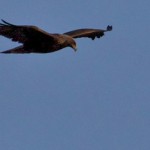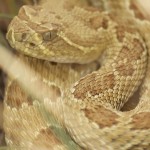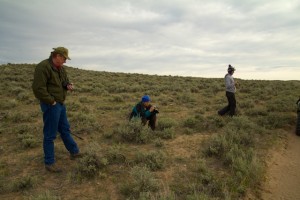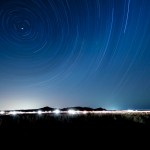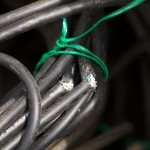 I shouldn’t write posts about how quickly the end of the season is approaching, or it might actually arrive even faster. In a surprise turn of events, we are done with sound recording (and most likely fembot experiments) on Monument Lek as of today. We conducted a third experimental trial at Monument this morning. My routine was a little off- the birds all flushed before 6, before I’d even turned on my sound recording gear. They started coming back about 45 minutes later, and at that point I was rushing to get my recording projects set up and get my video camera focused on one of the returning females.
I shouldn’t write posts about how quickly the end of the season is approaching, or it might actually arrive even faster. In a surprise turn of events, we are done with sound recording (and most likely fembot experiments) on Monument Lek as of today. We conducted a third experimental trial at Monument this morning. My routine was a little off- the birds all flushed before 6, before I’d even turned on my sound recording gear. They started coming back about 45 minutes later, and at that point I was rushing to get my recording projects set up and get my video camera focused on one of the returning females.
At this point I noticed one of the channels had a lot of static, but it was a little ways into the recording session that I realized 4 of the channels were not showing any response to the gusts of wind coming through. Further investigation revealed that there was no apparent input based on equalizers on the digitizing pre-amp. After the problem persisted when I shut everything down and started it back up, it left a few possibilities: 1) the phantom power wasn’t working (I eliminated this hypothesis by plugging cables from working channels into channels that weren’t working, and visa versa); 2) the mics were not plugged in properly, or 3) there was a problem with the cables themselves. I continued recording during the experiment on our remaining nine or ten channels, and it wasn’t until I could pack up the recording gear and get into the tub with the extra spools of cable that I could confirm theory #3. Something had chewed through several of the cables, sometimes multiple loops of the same cable!
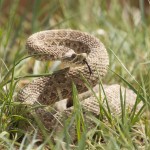 This would have been a real pain to fix, and we might not have had time to get back to Monument anyway, so it seemed like a good idea to pull the Monument cables this afternoon, before our anonymous cable muncher could destroy any more. Luckily pulling cables is usually a lot quicker than digging the trenches to put them in, so we were able to wipe down and coil all the cables, all the while flagging any spots where we would need to repair cables. Julia found another rattlesnake near the lek- this one put on a really good show for our cameras. I’m sure it is just coincidence that we found two rattlers so close to the lek, but it does make me feel a little bit glad that most years it is too cold for them to come out before we pack up and leave for California.
This would have been a real pain to fix, and we might not have had time to get back to Monument anyway, so it seemed like a good idea to pull the Monument cables this afternoon, before our anonymous cable muncher could destroy any more. Luckily pulling cables is usually a lot quicker than digging the trenches to put them in, so we were able to wipe down and coil all the cables, all the while flagging any spots where we would need to repair cables. Julia found another rattlesnake near the lek- this one put on a really good show for our cameras. I’m sure it is just coincidence that we found two rattlers so close to the lek, but it does make me feel a little bit glad that most years it is too cold for them to come out before we pack up and leave for California.

